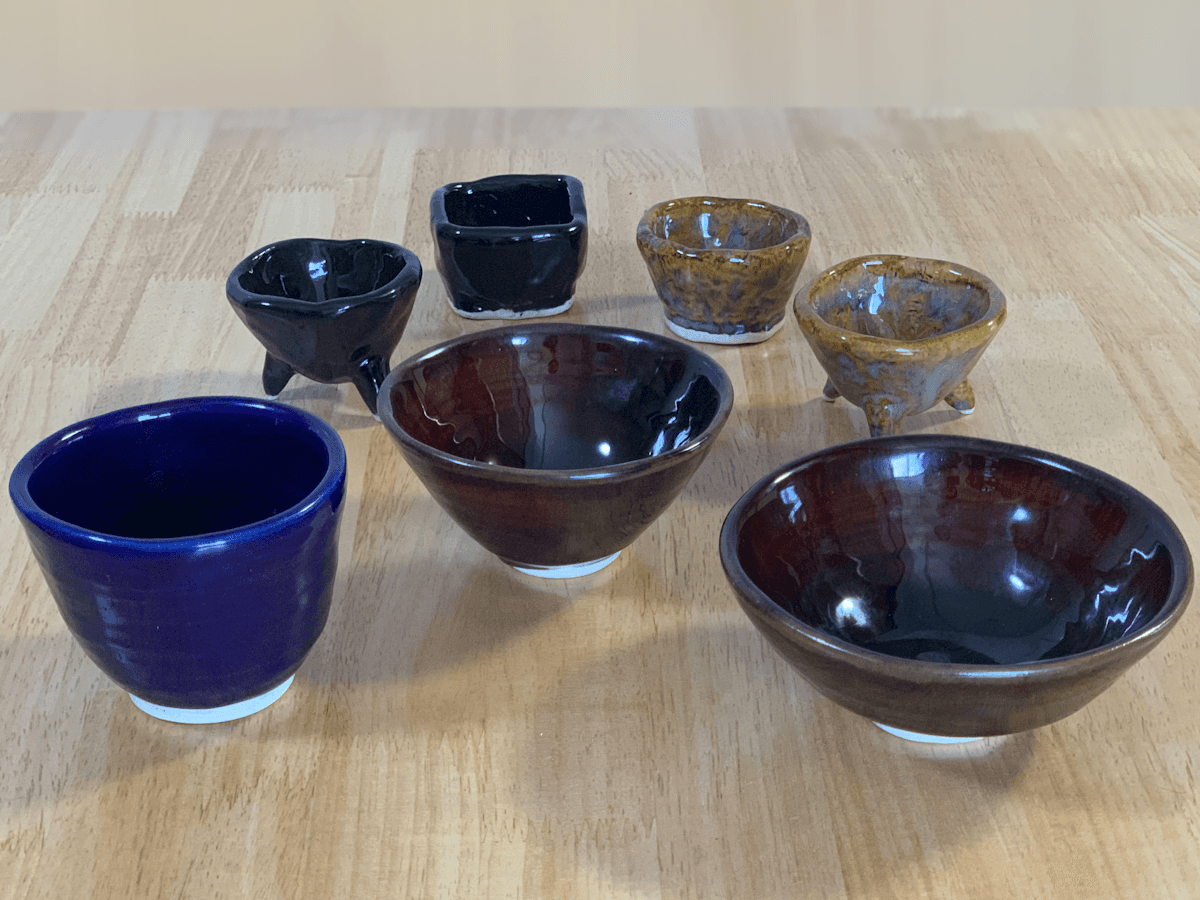Eating from Clay: The Joy of Homemade Vessels
There’s something deeply satisfying about eating and drinking from a vessel you made yourself. It’s not just the weight in your hands, or the way the glaze catches the light. It’s the memory of the moment it took shape, still hidden in the curves and surfaces.
Lessons started simply enough: four pinch pots. Two stand on little tripod legs like ancient lamps. Two have a neat ring foot turned around the base. They’re slightly uneven, but my wife finds them charming.
My first pinch pots declare their handmade-ness, and defy you to find their fault. We burn incense in the brown ones, and use the black ones at table for pickles and other condiments.
Next came a coil-built cup for water, modest in size with its layers smoothed into one continuous curve. Then, using the same coil technique, I tried my hands at bowls: one wide and low, the other the perfect size and shape for rice. These were all hand-built and -trimmed on a table-top banding wheel, each one teaching me a little more about balance, proportion and patience.
Once these early works were glazed and fired, I found myself using them daily. Brown rice in the smaller bowl. Vegetables in the wider one. Cold water in the cup. Water tastes better out of a blue ceramic cup.
The connection is different: food tastes more present. I notice the smoothness of the lip of the bowl.
It’s not just a meal. It’s a collaboration between the cook, the eater and the potter (who in this case is also the eater, and sometimes all three).
Lately, I’ve moved on to slab plates with pressed leaf reliefs, mugs made by rolling slabs around a bottle, a coconut-sized lidded pot, and a pair of wide, shallow pasta bowls. These are all still waiting for their turn in the kiln, so for now, they live in my mind’s gallery, imagined in their finished colors, full of food and drink yet to come.
Today's pasta bowls were made with a combination of white and red clay, mixed together to marble the colors. I carefully sliced the slab horizontally into two even layers, then draped them over a form, pressed them with a small sandbag, cut them, signed them, and then stood around with a hairdryer until they were firm enough to remove from the molds.
I can't wait to eat from them.
Making pottery has changed the way I think about dishes. They’re no longer just vessels. They’re companions to the rituals of eating and drinking.
Every time I reach for a dish I made, I remember not just the class where it was made, but the steady joy of shaping clay into something that lasts. The trimming process, after the formed clay has been let dry to the leather-hard stage and can be spun on the wheel and shaved into shape with metal tools, is deeply rewarding.
The whole process is therapeutic. Like my friend Dave says, “there’s primal satisfaction in taking earth and transforming it into something useful.”
It used to be dirt, and now we eat and drink from it.
